Once upon a time in a humble garden, there lived a dreamer—a gardener (we’ll call her Ann) with a heart full of hope and a wallet that echoed with frugality. With the desire to create something truly enchanting, she embarked on a quest: to plant and nurture a living willow arbor arch-like structure without spending a fortune. Armed with a budget of under $50 and a boundless imagination, this journey unfolded into a tale of resilience, creativity, and the remarkable beauty that can emerge from the simplest of means. This is Ann’s story of how a living willow arbor sculpture transformed an ordinary garden into a place of wonder and whimsy, proving that magic can be woven into the very fibers of nature, even on a shoestring budget.
Story and willow structure by Ann Amato-Zorich.
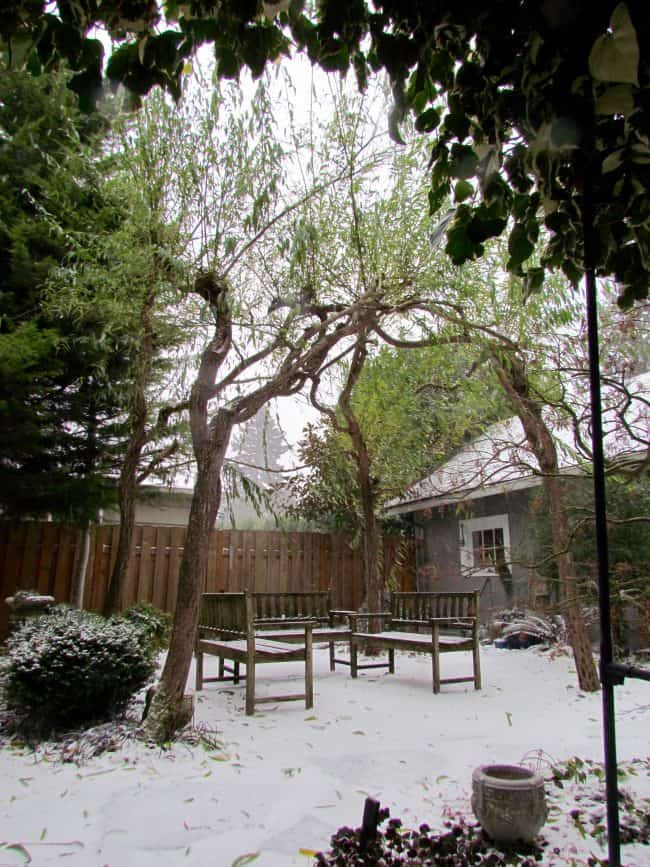
A Living Will Structure Origin Story:
Guests are always surprised when I tell them our willow arbor only cost $35.
Back in 2005, I spent $8 plus shipping for four hybrid willows on Ebay and the 10’ x 10’ gazebo style white canopy tent frame was $20 at an end of the summer drug store sale. Of course, this price doesn’t take into account the number of hours I’ve spent training and pruning it—but that’s not the point.
The small concrete stucco house that I call home didn’t have much of a garden when we bought it.
There were a few patches of grass, a Rhododendron, some Iris and two mature Douglas fir trees.
Almost immediately I started to plant my plant collection, but more than anything I wanted privacy in the back garden.
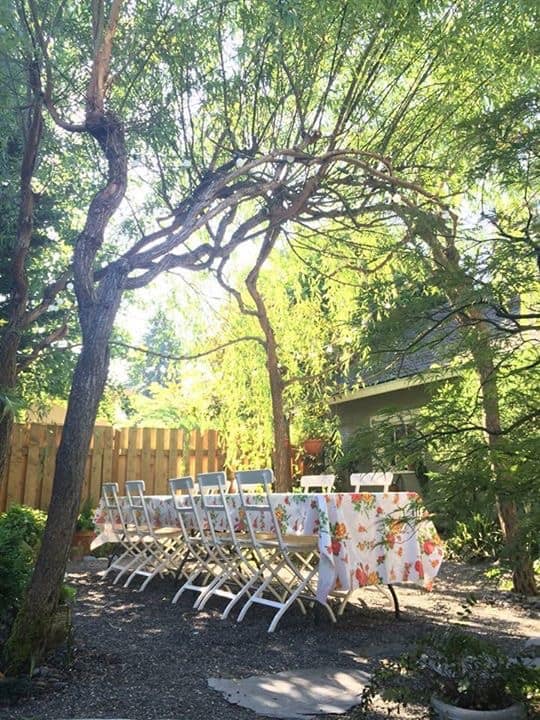
Since my garden is only 30’ x 30’ I knew this would be a difficult task.
An old double loop wire fence with Spirea growing through it separated us from the back of a single-story apartment building to the east, and, to the north, a chain link fence divided our yard from the neighbor’s. My mom planted a hedge for the north side, giving this to us as a housewarming present. Our first big project was to remove the patches of lawn.
Planting A Living Willow Structure
The expenses associated with homeownership were overwhelming in the beginning and I knew that whatever we assembled had to be inexpensive. The idea of sculpting trees first came to me after reading a book I’d found locally on the shelves at the Multnomah County Library. Its title escapes me now, after all, this was over a decade ago. But the book covered the basic principles of arbor sculpture and the work of Axel Erlandson.
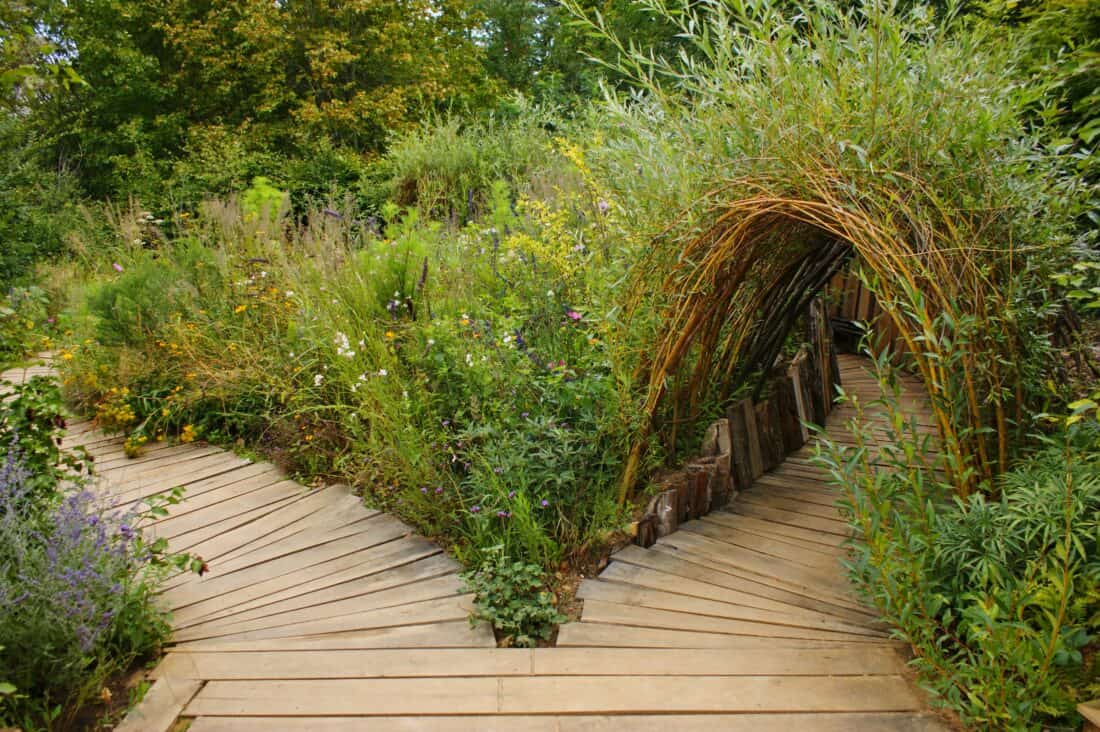
I made the project happen as quickly as possible because I knew that it needed time and patience. It didn’t take long before the arbor began to fill in because it’s no joke when they say that hybrid willows grow quickly. It took years, however, for it to fully mature.
I often fail to mention that the hollow inexpensive metal frame was rusting and falling apart just as the trees were beginning to take shape. In one spot, part of the frame even disappeared into the trunk of one of the trees. Sometimes, the trees can grow so quickly that even the loop of a hanging basket can disappear into the rapidly thickening branches.
Types of willows or trees to use for a living sculpture
Hybrid willows are not prized trees. And they are far from popular where I live in the Pacific Northwest. This region houses many incredible trees and I grew up knowing these were far from desirable. Nonetheless, I love mine and if given the opportunity to do this again I would likely still do it. Their growth rate is perfect for a project like this, but I might also consider Laburnum, Fagus, and native willows as well. There are so many other options for these large structures. I only wish I had more space to experiment.
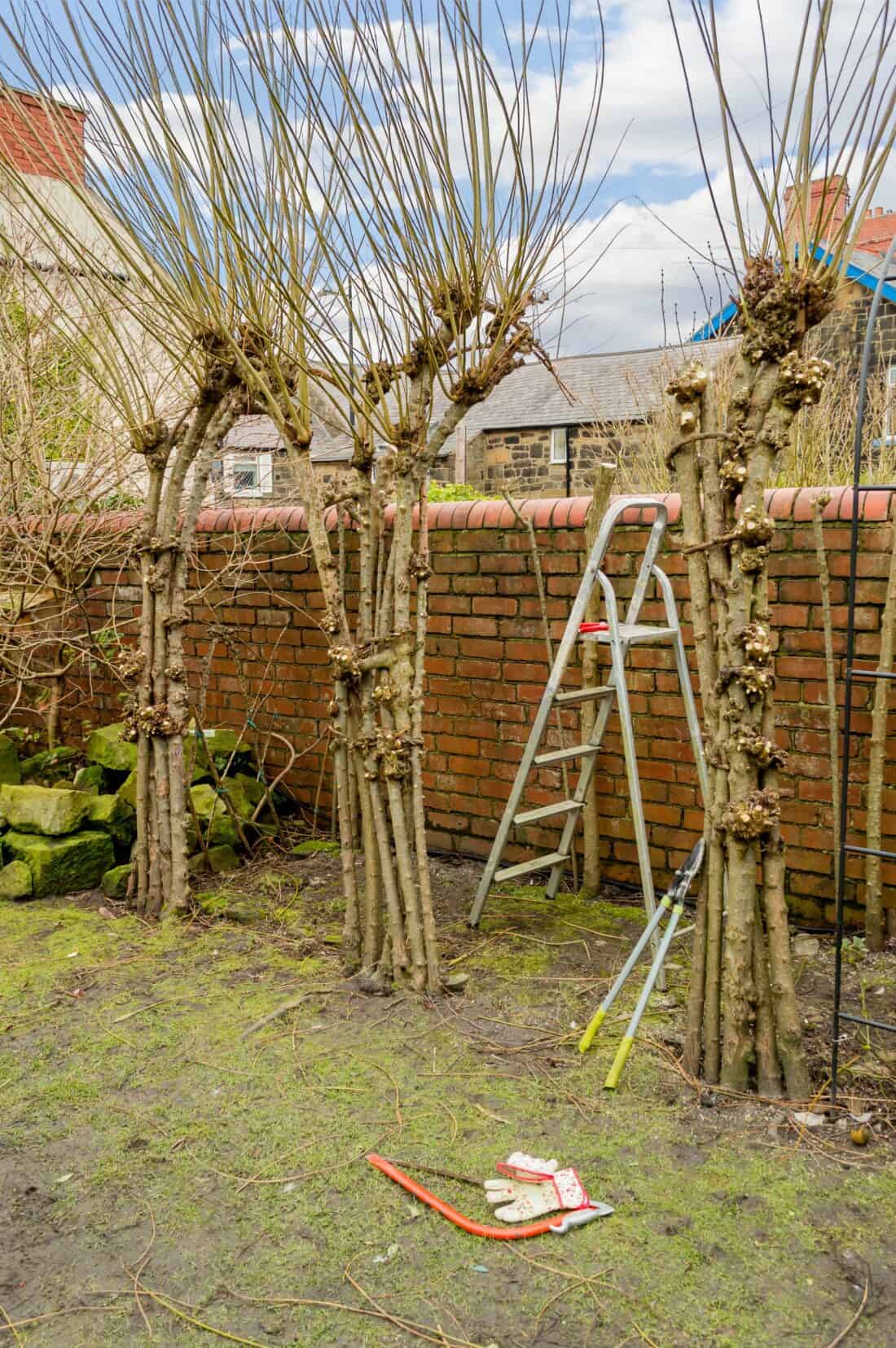
Living Willow Arbor Maintenance
A living arbor of any kind can become a maintenance issue. But nurturing a living structure in a city where it is closely surrounded by built environments, is a real treat. It has become a center of this home and it has helped me to better appreciate the differences between built, cultivated and natural spaces.
Living willow arbor maintenance isn’t easy – mostly because it is a constant job. Once the initial shape is created, you need to constantly tie the branches into the frame as it grows. Over time, the strongest branches and leaders should show their girth. Keep these and prune the rest. You must maintain constant pruning, or else problems will arise. I was distracted when I went through a divorce and some branches grew through the top. Their weight began to threaten the integrity of the structure. Thankfully, it didn’t go too far and today, the arbor is doing well. But, it did take more than a year to get it back into shape after the wrong branches had grown.
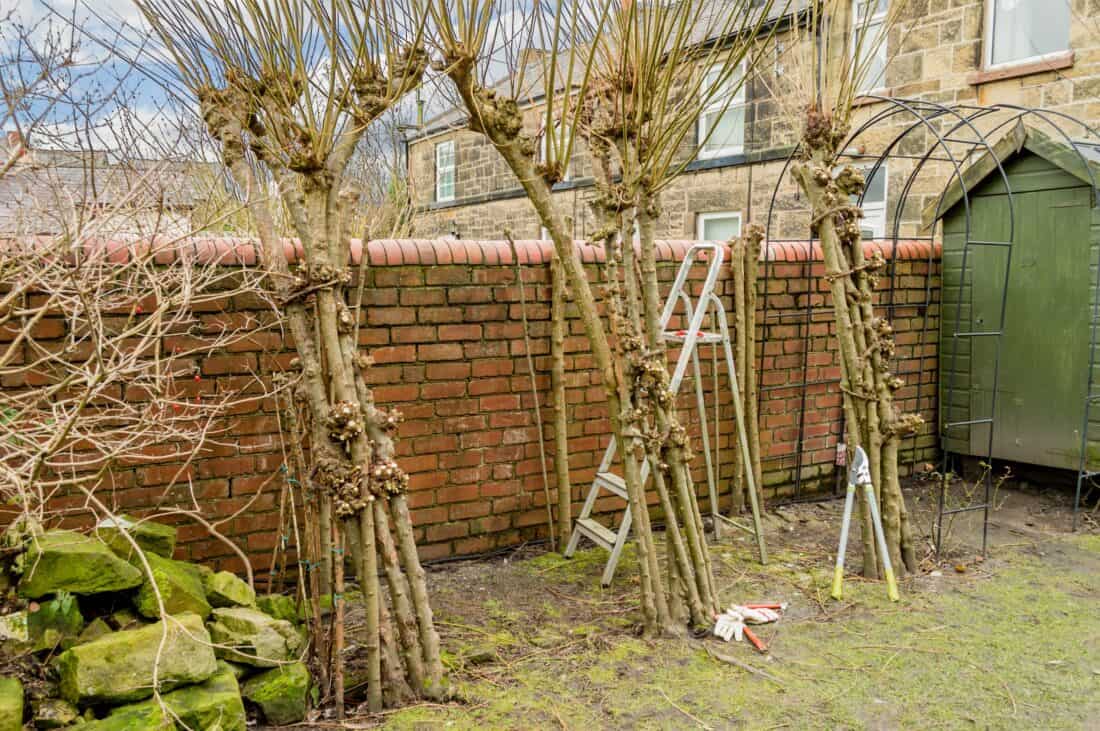
Pests and Plant Varieties for the living willow arch
Hybrid willows are not popular because of their roots and it’s true they can be aggressive. As far as I know, my trees have remained tame. They don’t require a great deal of pampering in my climate. More needy plants live around the arbor all summer so the trees soak up the water lavished on them. Thanks to the rain we receive during the rest of the year, the trees require little extra help. The arbor gets blasted by wind all winter, but it hasn’t had a problem yet. Pests attacked one summer, but they were never identified. After I treated them, I’ve never had an issue again.
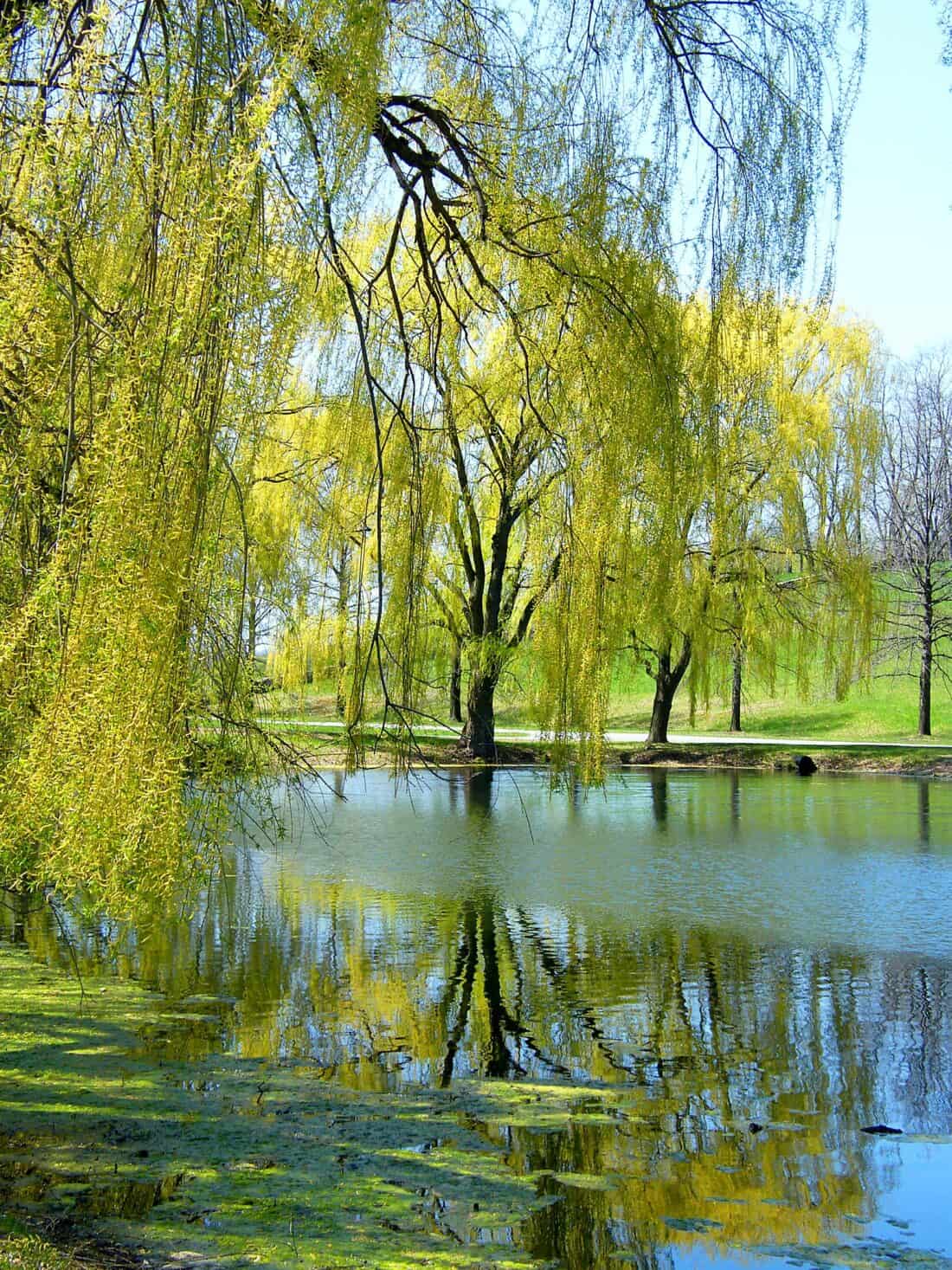
Using the Willow Arbour
When I first conceived of the arbor I dreamed of dining beneath it. Originally we had a checkerboard pattern of pavers with moss. We eventually replaced the surface beneath and around the trees with gravel for a more even footing. I host underground dining events beneath the trees.
Over time, the arbor has woven itself into my life. Just the thought of not having my coffee beneath it on a sunny summer morning makes me sad. And yet, I know that like any living creature it won’t be there forever. This vulnerability captivates me too. I care about this living space. Few other plants have been as enjoyed in my garden. The willows are the heart and soul of my garden but I always feel a twinge of shame because each only cost $2.
There’s work to do. For instance I plan to add an outdoor chandelier next summer. I’m also building a new dining table from salvaged wood, but I suspect the $35 willow arbor will remain the star of the show.
Words and Photography By: ANN AMATO-ZORICH
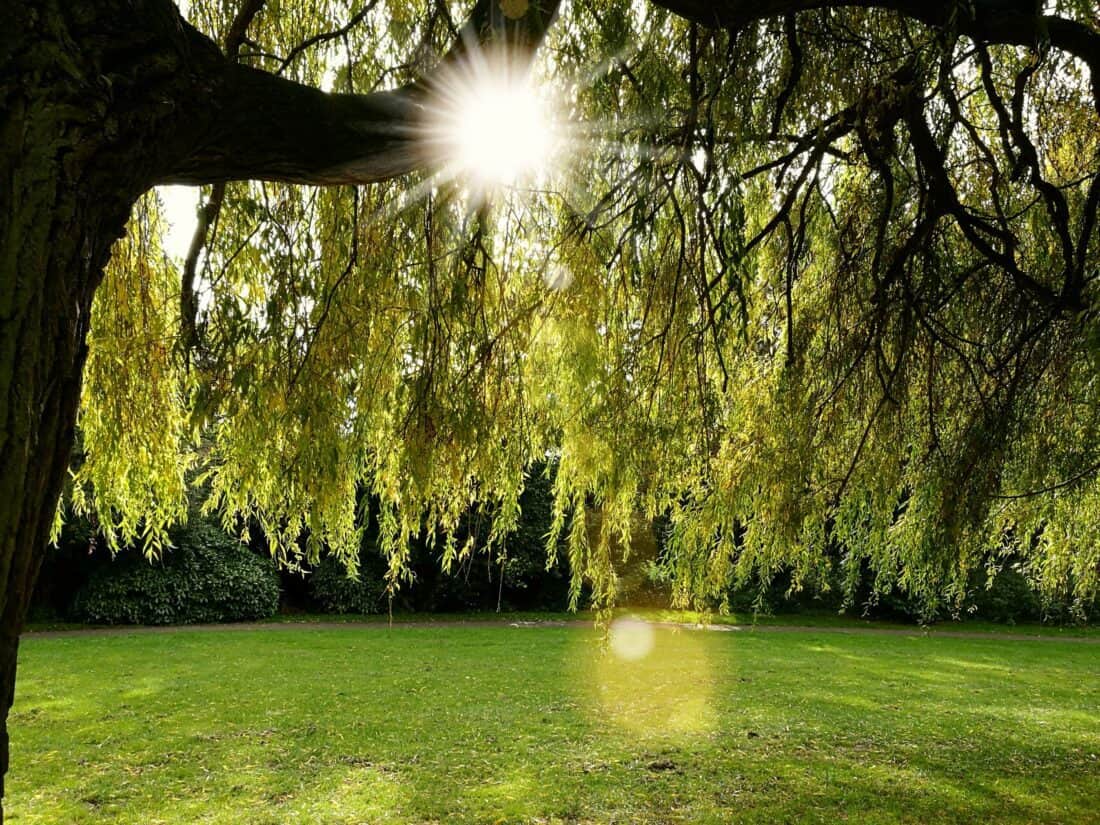
FAQ – Questions About Growing and Building Living Willow Sculpture:
How to plant a willow tree?
How to grow willow tree?
How long do willow trees live?
How to make a willow arbour?
Where can I buy willow?
When to plant willow whips?
You might also enjoy these posts about living willow sculpture:
images: Ann Amato-Zorich, Jerry Clack, Linda Bestwick, Karl Gercens, Stanley Zimny
Share this post:
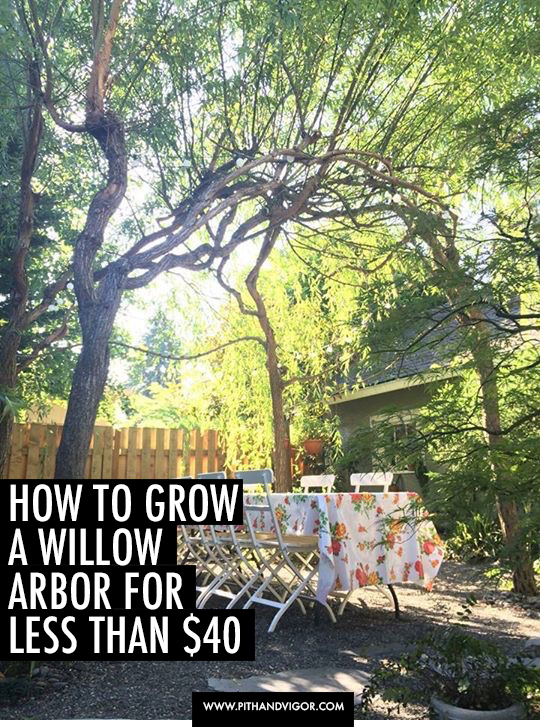
That is so much fun! I want one.
my first willow arbor was planted in april 2011 during which i researched willow arbors on the webernets and met you on your blog http://www.amateurbot-ann-ist.com/. The existence of your arbor gave me ‘permission’ to proceed with the experiment. I see this article bringing you more willow arbor connected friends. I also spent very little on my willow arbors. i started with a pair of bare root Dragon’s Claw Willows (Salix matsudana ‘Tortuosa’). I took cuttings from them and grew up another pair of these trees which i planted in our new garden in 2013. Your willow arbor is a wonderful part of my horicultural world.
Inspiration on a grand scale. I love how you recognize you discounted it because it was “inexpensive.” I tend to do this to myself at time about common plants. Your love and maintenance of the trees is priceless. Truly. I cannot wait to have a meal under your arbor. Next year, hopefully.
The perfect solution for a gazebo. Maybe in money terms, it is not expensive, but in the equivalent of embedded labor is very much.
What a lovely covering you created for any backyard and for just $35…along with the investment of your time, handwork and care. Beautifully done and created. The photo of summer is so inviting and so is winter with the benches and the light snow covering. Very fun to learn about what I would consider a very unique idea!
This will be great in my garden (https://www.gardenloka.com) but I think it will really cost too much labor. Might need my husband’s hands in this 🙂
Such a beautiful idea.